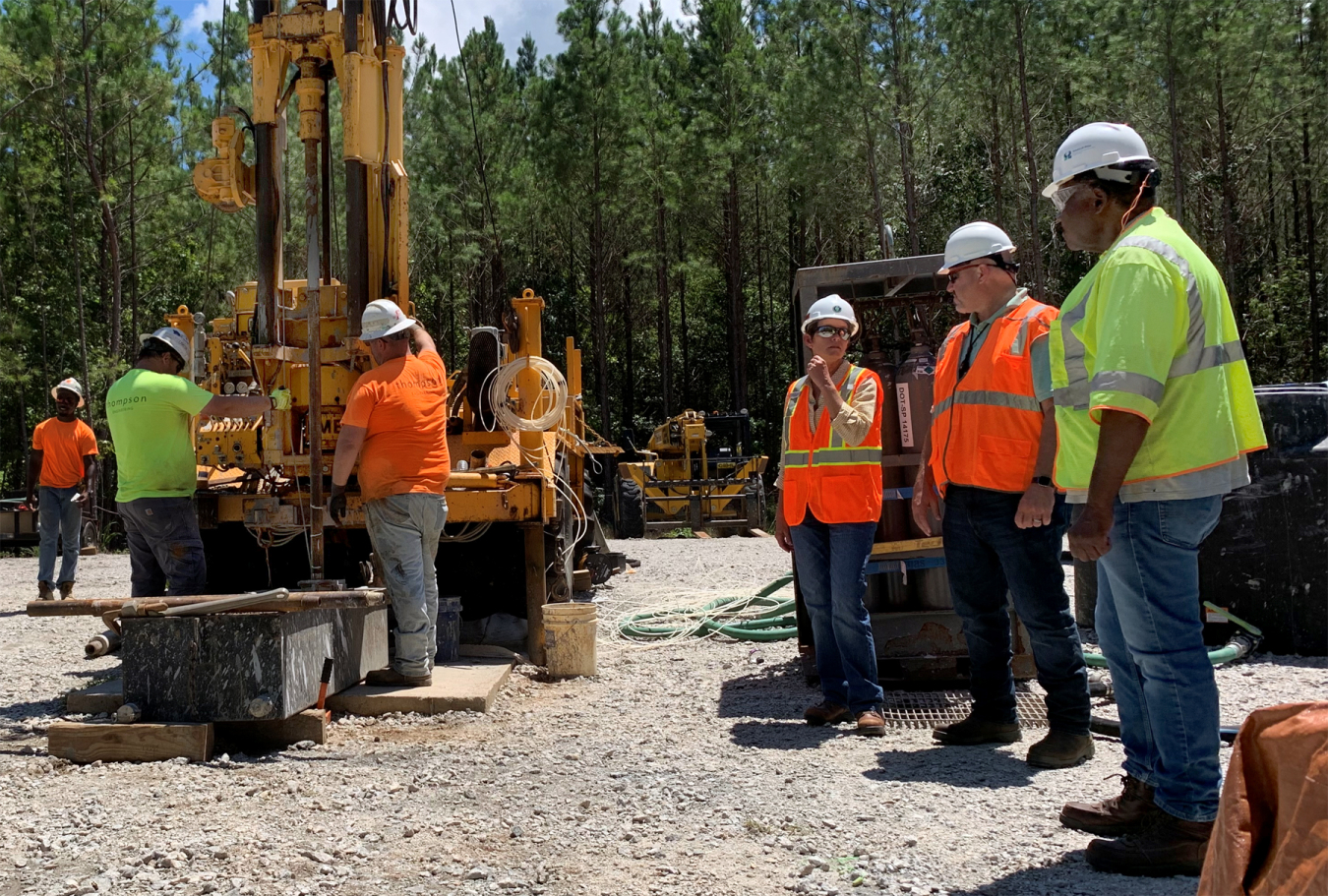EM crews employed a unique solution to safely close a 70-year-old well at the Savannah River Site (SRS), saving about $900,000.
Office of Environmental Management
November 8, 2022
Using an innovative metal piercing device and cement-like grout, Savannah River Nuclear Solutions (SRNS) saved about $900,000 in a project that safely closed a 70-year-old well at the Savannah River Site. Karen Adams, third from right, DOE-Savannah River federal project director, discusses progress on the project with Allen Henderson, far right, SRNS subcontract technical representative and Joao Cardoso-Neto, SRNS project manager, Area Completion Projects.
AIKEN, S.C. – EM crews employed a unique solution to safely close a 70-year-old well at the Savannah River Site (SRS), saving about $900,000.
Employees with EM contractor Savannah River Nuclear Solutions (SRNS) conducted research to find an alternative approach for the closure of the 600-foot-deep, large-diameter well. The solution they found costs much less than the traditional approach, which risks harm to the environment.
“Conventional methods would have involved drilling out the well and grouting the entire borehole, which would have been extremely expensive and could have potentially contaminated an aquifer that the well tapped deep beneath SRS,” said Joao Cardoso-Neto, project manager, SRNS Area Completion Projects. “Instead, research revealed that a special tool could perforate the well’s carbon-steel casing, allowing cement-like grout to be forced through multiple openings under pressure.”
The tool punches vertical slots through the casing wall at a targeted depth. This is accomplished when 3,000 to 4,000 pounds of force pulls up a metal rod, driving a thick steel blade on the rod through the pipe.
The production well was installed during construction of the Savannah River Plant, now called Savannah River Site. Eventually, the U.S. Geological Survey (USGS) started using the well to collect data related to groundwater levels in the site’s M Area. It was one of several unusually deep wells drilled across the 310-square-mile nuclear reservation in the early 1950s.
The USGS is the nation's largest civilian mapping and water, earth and biological science agency. It collects, monitors and analyzes natural resource conditions, issues and problems, and provides scientific understanding of them.
Proposals were solicited from multiple firms on the best way to close the large, deep well, whose design does not comply with current environmental protection standards. SRNS protégé small business CTI and Associates and its subcontractor developed an innovative closure plan involving the special tool. The team provided the equipment needed to perforate the well and grout it using a pressurized system to ensure a contiguous column of grout through the entire well. Approximately 4,500 gallons of grout were required to complete the task.
“Wells of this type can be found across the Department of Energy complex at multiple sites,” said Karen Adams, DOE-Savannah River federal project director. “Our desire is to pioneer and share this technology and highly efficient approach to closing archaic wells that are not environmentally sound. Working closely with SRNS Area Completion Projects personnel, CTI has helped ensure the environmental protection of this portion of the site per South Carolina Department of Health and Environmental Control requirements.”
To receive the latest news and updates about the Office of Environmental Management, submit your e-mail address.

